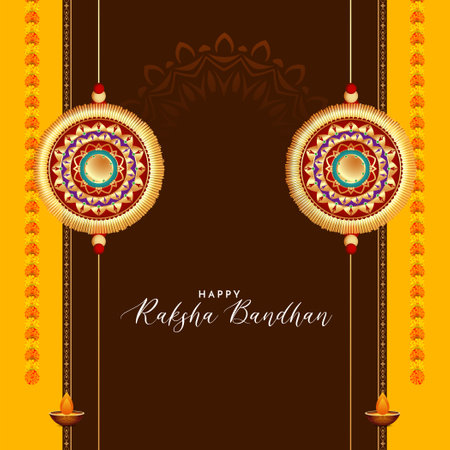Introduction to Pet Fish in Indian Culture
In India, the tradition of keeping pet fish is deeply woven into the fabric of daily life and cultural practices. Across various regions and communities, fish are not merely ornamental creatures but hold significant spiritual symbolism and auspicious value. The sight of a home aquarium or a bowl with vibrant goldfish is common in many Indian households, believed to bring good luck, prosperity, and harmony. Rooted in ancient beliefs and Vastu Shastra principles, fish are considered powerful symbols of positive energy flow. From bustling urban apartments in Mumbai to serene homes in Kerala, pet fish serve as living reminders of nature’s balance and the interconnectedness of all beings—a concept celebrated in Indian philosophy. Their presence in homes during special occasions and festivals further highlights their role as bearers of fortune and spiritual well-being. As we explore deeper into the importance of pet fish in Indian festivals and traditions, it becomes clear that their value extends far beyond aesthetics, touching upon faith, culture, and everyday Indian life.
2. Historical Significance of Fish in Indian Traditions
The presence of fish in Indian traditions is deeply rooted in the country’s ancient history, mythology, and religious beliefs. Fish have always carried symbolic meaning across various regions and communities, often representing abundance, prosperity, fertility, and spiritual transformation. Their importance can be traced back to some of the oldest Indian texts and legends, making them an integral part of both everyday life and special occasions.
Matsya Avatar: The Divine Fish Incarnation
One of the most prominent examples of fish symbolism in India is found in Hinduism through the Matsya Avatar. According to Hindu mythology, Lord Vishnu took the form of a giant fish (Matsya) to save humanity from a great flood. This story is mentioned in texts like the Bhagavata Purana and Matsya Purana. The narrative highlights the protective and nurturing aspects of fish, cementing their sacred status among Hindus and influencing rituals and art forms across generations.
Fish Motifs in Indian Art and Culture
Fish motifs are widely seen in Indian handicrafts, temple carvings, textiles, and jewelry—often as signs of good luck and prosperity. In Bengal, for instance, the ‘Matsya’ motif is prevalent during weddings and festivals, symbolising marital bliss and abundance. Similarly, Assamese jewellery features intricate fish designs that carry cultural significance.
References to Fish in Religious Texts
| Religious Text | Fish Symbolism/Role |
|---|---|
| Matsya Purana | Narrates the legend of Lord Vishnu’s fish incarnation saving sages and scriptures from deluge. |
| Bhagavata Purana | Describes Matsya Avatar as a saviour figure; emphasises spiritual renewal. |
| Buddhist Jataka Tales | Features stories where fish act as symbols of wisdom or moral lessons. |
| Folk Traditions | Fish used in rituals for fertility, fortune, and protection against evil. |
Cultural Adaptations Across Regions
The reverence for fish transcends religious boundaries within India. For example, in coastal states like West Bengal, Odisha, Kerala, and Assam, fish are not only dietary staples but also feature prominently in traditional ceremonies. In South India, dried or live fish are sometimes gifted during auspicious events to signify wishes for prosperity. This enduring significance ensures that pet fish continue to play a meaningful role in contemporary Indian households during festivals and important milestones.

3. Role of Pet Fish in Indian Festivals
Pet fish have a unique place in Indian festivals, often symbolising prosperity, harmony, and positive energy. During major celebrations like Diwali, families clean and decorate their homes, and having an aquarium with colourful fish is considered auspicious. Many people believe that keeping fish during Diwali brings wealth and good fortune, as the movement of fish in water is thought to enhance the flow of positive energy or ‘vaastu’ within the house.
During Makar Sankranti, which marks the harvest season and transition of the sun into Capricorn, some regional traditions involve offering live fish or symbolic fish items as part of ritual practices. In states like West Bengal and Assam, fish is integral to festive meals and is offered to deities for blessings. While not all households keep pet fish specifically for these festivals, gifting ornamental fish or setting up new aquariums during this time is seen as a gesture of wishing someone abundance and happiness.
Local festivals across India also showcase the role of pet fish in different ways. For example, in some South Indian communities, small clay or brass fish are used as part of Kolam or Rangoli decorations outside homes during festivities. In the North-Eastern states, live fish are sometimes released into ponds or rivers as acts of charity and goodwill, reflecting spiritual beliefs connected to life cycles and renewal. These customs highlight how pet fish are woven into both traditional rituals and modern household celebrations, bridging cultural beliefs with contemporary lifestyles.
Vastu Shastra and the Beliefs Around Aquarium Placement
In Indian households, the placement of pet fish and aquariums is not just a matter of aesthetics but is deeply rooted in the ancient science of Vastu Shastra. According to traditional Vastu principles, keeping an aquarium at home is believed to attract wealth, prosperity, and positive energy, especially when placed in specific directions. Many Indian families consult Vastu experts before bringing an aquarium into their homes, aligning its position with cosmic energies for optimal benefits.
Vastu Shastra recommends certain guidelines regarding the type of fish, aquarium shape, and placement to maximize their auspicious effects. For example, moving water in an aquarium symbolizes the flow of life and good fortune. Goldfish and Arowana are popular choices as they are considered lucky and vibrant. The northeast or living room corner is usually suggested for placing aquariums to ensure maximum positivity.
| Vastu Element | Recommended Practice | Expected Benefit |
|---|---|---|
| Aquarium Direction | Northeast or North side of house | Enhances prosperity and harmony |
| Fish Type | Goldfish, Dragon Fish (Arowana) | Attracts luck and happiness |
| Aquarium Shape | Rectangular or Square | Facilitates balanced energy flow |
| No. of Fish | 9 (8 gold + 1 black) | Symbolises abundance; black fish absorbs negativity |
The belief in Vastu’s influence extends beyond residential spaces to temples and business establishments across India. During festivals like Diwali or New Year’s, it is common for families to clean or upgrade their aquariums as part of rituals to invite new beginnings. In summary, for many Indians, keeping pet fish according to Vastu Shastra is a time-honoured way to align tradition with modern living while nurturing hope for a prosperous future.
5. Fish and Social Customs in Indian Households
In Indian society, pet fish and aquariums have transcended mere decorative purposes to become thoughtful gifts symbolising prosperity and positive energy. Gifting pet fish or well-designed aquariums is a popular custom during weddings, housewarmings (Gruhapravesham), and major festivals like Diwali and Pongal. This tradition draws from deep-rooted beliefs that fish bring good luck, wealth, and harmony to the home. According to Vastu Shastra and Feng Shui, keeping live fish in the living space can ward off negative energies and usher in abundance. When presented as gifts, aquariums often reflect wishes for new beginnings, smooth relationships, and financial stability for the recipients. Many families opt for goldfish or Arowana—considered auspicious species—for such occasions, as they are believed to multiply fortune. Over time, this practice has evolved with urban trends: modern households may prefer designer tanks or smart aquariums, blending cultural significance with contemporary aesthetics. By incorporating pet fish into social customs, Indians not only uphold age-old traditions but also enhance their homes’ ambiance while expressing heartfelt blessings during life’s important milestones.
6. Caring for Pet Fish: Indian Perspective
Popular Aquarium Fish Species in India
When it comes to pet fish, Indian households often prefer species that are not only visually appealing but also considered auspicious or lucky according to local beliefs. Popular choices include Goldfish, Betta (Fighter Fish), Guppies, and the Flowerhorn Cichlid. Each of these species has its own significance in Indian culture—for example, Goldfish are believed to bring prosperity and good luck, while Betta fish are admired for their vibrant colours and resilience.
Typical Care Routines
Caring for pet fish in India involves practical routines that blend modern aquarium management with traditional wisdom. It is recommended to use clean, dechlorinated water and maintain a regular cleaning schedule for tanks or bowls, ideally once a week. Feeding should be done once or twice daily using high-quality commercial fish food or locally available alternatives like boiled peas or mosquito larvae (where safe and permitted). It’s important to avoid overfeeding as it can lead to water pollution, which is especially relevant during festivals when homes may be busier than usual.
Essential Equipment
Basic aquarium equipment such as air pumps, filters, and thermostats are increasingly available at local markets and online platforms across India. For smaller towns where electricity supply might be inconsistent, battery-operated air pumps can be a practical backup. Decorative items such as pebbles, aquatic plants, and temple figurines not only beautify the tank but also create a culturally familiar environment for the fish.
Cultural Tips for Responsible Fish Keeping
Respecting cultural traditions is key when keeping pet fish in India. Many families avoid placing aquariums in kitchens or bedrooms due to Vastu Shastra principles, instead opting for living rooms or entryways to attract positive energy. During festivals like Diwali or Durga Puja, extra care should be taken to shield tanks from loud noises and pollution caused by fireworks. Engaging children in simple care routines can also instil respect for living beings—a value deeply rooted in Indian ethos. Ultimately, responsible fish keeping is not just about decoration but about upholding harmony between tradition and modern pet care practices.

